|
Robert Fulton, Nautilus is borne
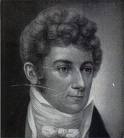 Robert Fulton, born in 1765 in Little Britain Township, Pennsylvania a marginal portrait painter but increasingly successful inventor living in Paris (1797), offered to build the French government a submarine for use against Britain. Fulton called it "a mechanical Nautilus. A machine which flatters me with much hope of being able to annihilate their navy". He would build and operate the machine at his own expense and would expect payment for each British ship destroyed. Fulton predicted that "Should some vessels of war be destroyed by means so novel, so hidden, and so incalculable, the confidence of the seamen will vanish and the fleet (be) rendered useless from the moment of the first terror." Robert Fulton, born in 1765 in Little Britain Township, Pennsylvania a marginal portrait painter but increasingly successful inventor living in Paris (1797), offered to build the French government a submarine for use against Britain. Fulton called it "a mechanical Nautilus. A machine which flatters me with much hope of being able to annihilate their navy". He would build and operate the machine at his own expense and would expect payment for each British ship destroyed. Fulton predicted that "Should some vessels of war be destroyed by means so novel, so hidden, and so incalculable, the confidence of the seamen will vanish and the fleet (be) rendered useless from the moment of the first terror."
After protracted delays and several changes in government, Fulton felt encouraged enough to build the submarine he called Nautilus. He made a number of successful dives, reaching depths of 25 feet and on one occasion staying down for as long as six hours, with ventilation on that excursion provided by a tube to the surface.
Nautilus was essentially a modified Turtle. In general size, method of submergence, system of ballast and pumps; it was an elongated Turtle with a larger propeller and a mast and sail for use on the surface. Even the weapon and method of attachment to an enemy hull was Bushnell’s. In trials, Nautilus achieved a maximum sustained underwater speed of four knots. Given the rank of Rear Admiral, Fulton made several attempts to attack English ships, which saw him coming and simply moved out of the way.
His relationship with the French government deteriorated. A new Minister of Marine reportedly said, "Go, sir. Your invention is fine for the Algerians or Corsairs, but be advised that France has not yet abandoned the Ocean". Fulton broke up Nautilus and sold the metal for scrap. He proposed but never built an improved version.
Fulton also attached the name `torpedo` (borrowed from a variety of electric stingray, genus Torpaedae) to that maritime weapon we now call a mine. Fulton`s torpedoes were meant to be towed into position, either by a submerged boat or a surface rowboat. When the French passed on the Nautilus, he offered to sell torpedoes to the English, demonstrating their utility by sinking an anchored ship with a pair of torpedoes towed into place by a rowboat.
At least two submarines reportedly operated during the War of 1812. A British admiral called one of them `a Turtle`, though assertions that Bushnell himself `returned to the charge` in the War of 1812 are not true. By that time, Bushnell, whose family had not heard from him for more than 25 years, was in his 70s and living under an assumed name in Georgia. The other submarine survives only in the notebooks of the revolver king Samuel Colt. The notebooks (now in the collection of the Connecticut Historical Society) show a design attributed to Silas Clowden Halsey. Colt added the notation "lost in New London harbor in an effort to blow up a British 74." Of this craft, nothing else is known.
Back to History Index
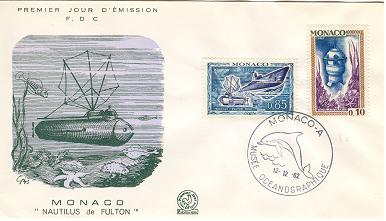 |
Monaco |
1962 |
Nautilus of R.Fulton and diesel powered submarine, 12 Dec' 1962 |
 |
Monaco |
1962 |
Nautilus of R.Fulton and diesel powered submarine, 12 Dec' 1962 |
 |
Monaco |
1962 |
Nautilus of R.Fulton and diesel powered submarine |
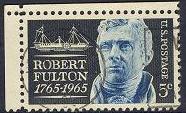 |
United States |
1965 |
200th anni' birth of Robert Fulton 1765-1965. Inventor and builder of the first Nautilus |
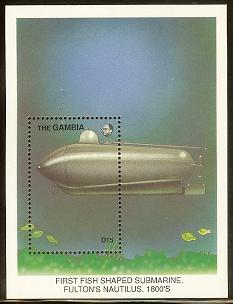 |
Gambia, The |
1988 |
Firest fish shaped submarine.Nautilus of R.Fulton 1801 |
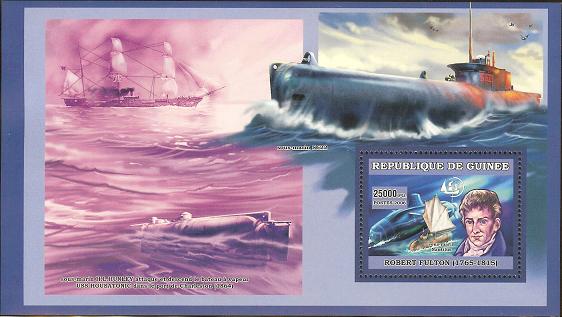 |
Guinea |
2006 |
Robert Fulton and his Nautilus, Submarine S- 622 and H.L.Hunley in margin of ss |
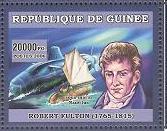 |
Guinea |
2006 |
Robert Fulton (1765- 1815) and his submarine Nautilus |
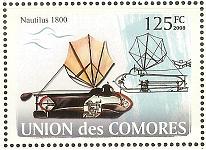 |
Comoros |
2008 |
Nautilus 1800- First practical submarine (Robert Fulton, USA) |
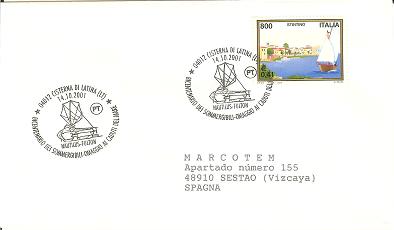 |
Spain |
9999 |
Bicentenario Del Sommergibili- Omaggio Al Caduti Del Mare, Nautilus- Fulton, 14.10.2001, 04012 Cisterna di Latina (LT) |
|